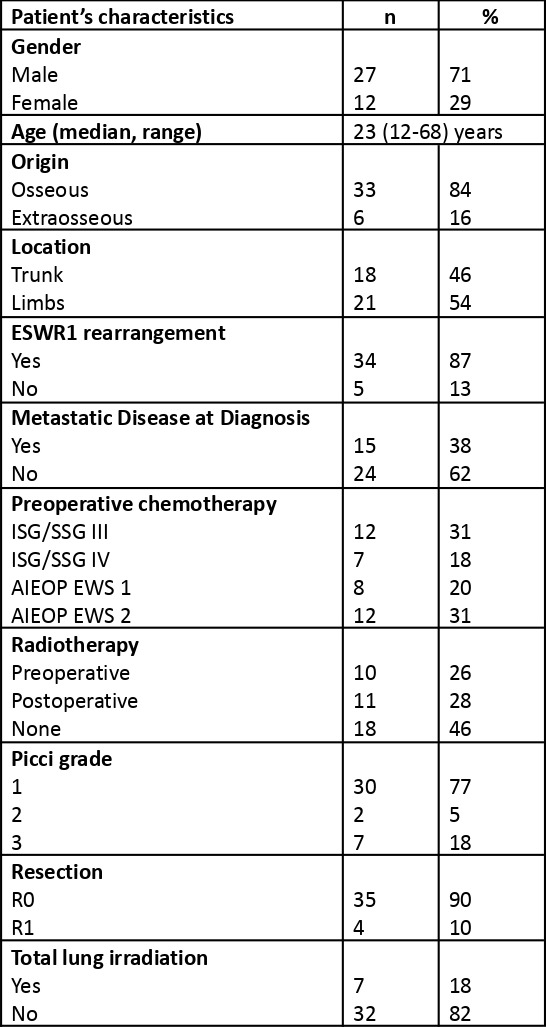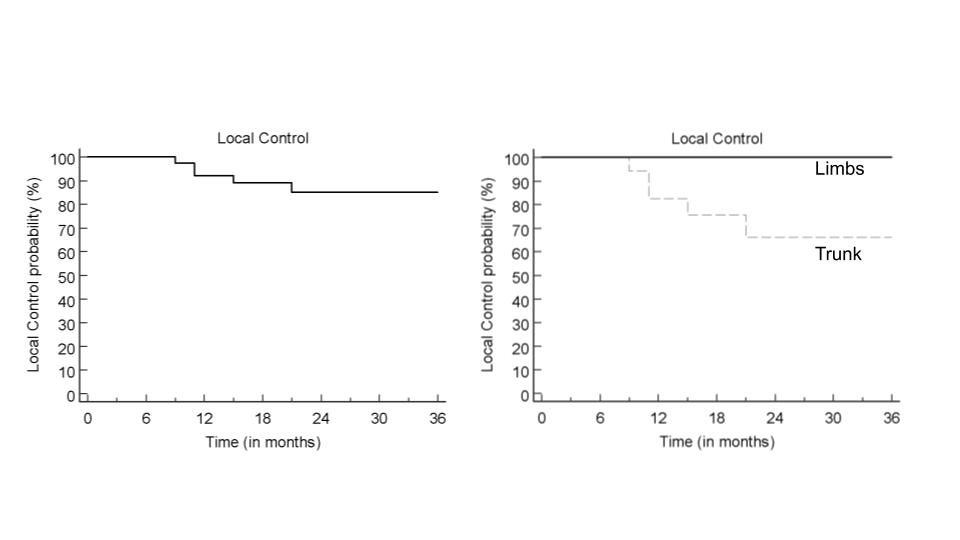Thirty-nine patients were included in our study. Skeletal and extra-skeletal disease were found in 33 (84%) and 6 (16%) patients, respectively. Primary tumor was located on the trunk in 46% of cases (n=18) and limbs in 54% of cases (n=21). Metastatic disease was present at diagnosis in 38% (n=15) of patients.
All patients received preoperative chemotherapy followed by surgical excision, resulting in a 90% R0 resection rate. Radiotherapy was administered in 21 (54%) patients to a median dose of 54 (range 42-54) Gy in 36 (range 28-36) fractions, consisting of preoperative and postoperative irradiation in 10 (26%) and 11 patients (28%), respectively.
Pathological response was scored grade 1 (n=30, 77%), 2 (n=2, 5%) and 3 (n=7, 18%). After a median follow-up of 22 months (range 8-72 months), 6 local recurrence occurred.
Local control (LC) was 92% at 1 year and 85% at 2 years. At univariate analysis, only primary tumor location in the trunk was correlated with impaired LC (median not reached, p=0.018). Use of preoperative radiotherapy was neither significantly correlated with grade 3 complete tumor response (24% versus 20% p=0.79) nor positive margin status (8% versus 20%, p=0.24).

